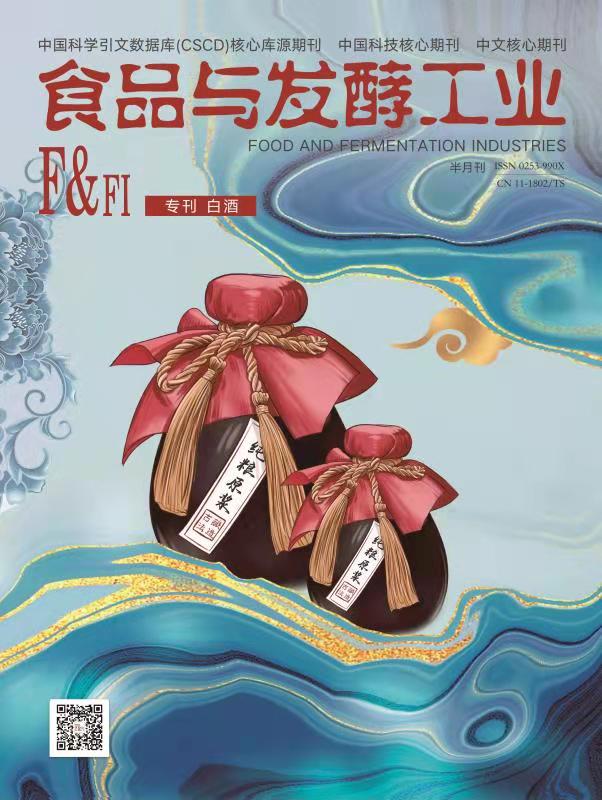SI Bo, YUAN Wenwen, GU Huihui, JIA Mengwei, LU Yongling, LYU Lishuang
Reactive carbonyl species (RCS) are toxic and highly reactive materials in liquor fermentation process which bring potential safety hazards to liquor products. In this study, a high performance liquid chromatography analysis method was established to simultaneously determine acrolein, methylglyoxal, crotonaldehyde, 5-hydroxymethylfurfural, formaldehyde and acetaldehyde in Chinese Baijiu. A comprehensive analysis of different flavor liquor samples and wine samples during processing was carried out. The diluted sample was derivatized with 2, 4-dinitrobenzene hydrazine at 50 ℃ for 1.5 h. A Beconsil C18 chromatographic column (250mm×4.6 mm, 5 μm) was used. The mobile phase was acetonitrile and water under gradient elution at a flow rate of 1.0 mL/min. The column temperature was set to 40 ℃, and the diode array detector was selected as dual-channel detection, with detection wavelength of 360 nm (ACR, MGO, CRO, FOR, ACE) and 400 nm (5-HMF), respectively. This method exhibited good linearity with correlation coefficients all above 0.999. The detection limits were in the range of 1-8 ng/mL and the quantitate on limit were in the range of 3-25 ng/mL. The spiked recoveries ranged from 85.39%-105.78%, with RSDs less than 4%. The level of RCS in Maotai-flavor Baijiu and sesame-flavor Baijiu was higher, which was speculated to be related to the high temperature fermentation. In the process of 8 rounds of fermentation and 7 times of liquor extraction, the RCS concentration in Maotai-flavor Baijiu was the highest in the 3rd, 4th and 5th rounds. The RCS of strong-flavor liquor rose to the highest in the process of “accumulation out of cellar”, and the RCS level in the sample of “the double bottom of liquid fermentation” and “the middle layer of liquid fermentation” were ranked first and second, respectively. Our method is stable and sensitive, which is easy to operate, and suitable for detecting RCS in liquor and semi-finished products in fermentation processing.
